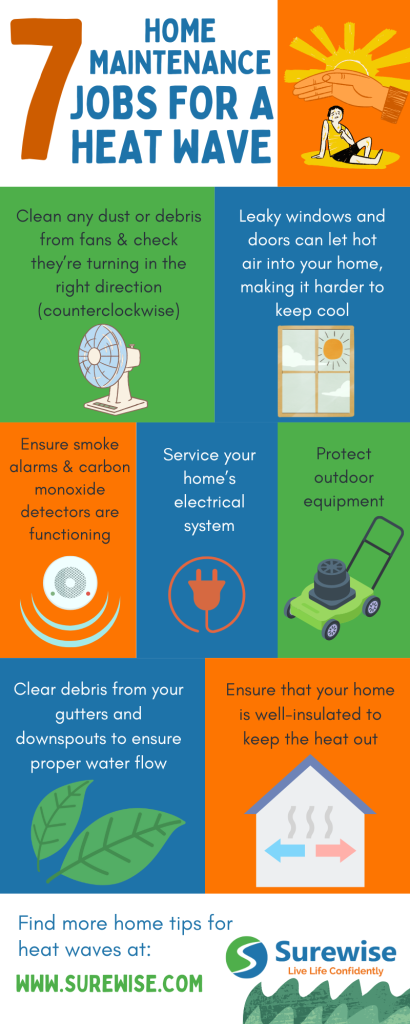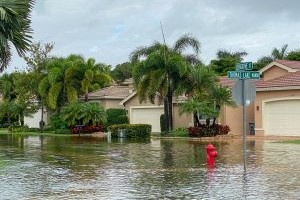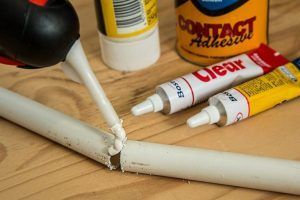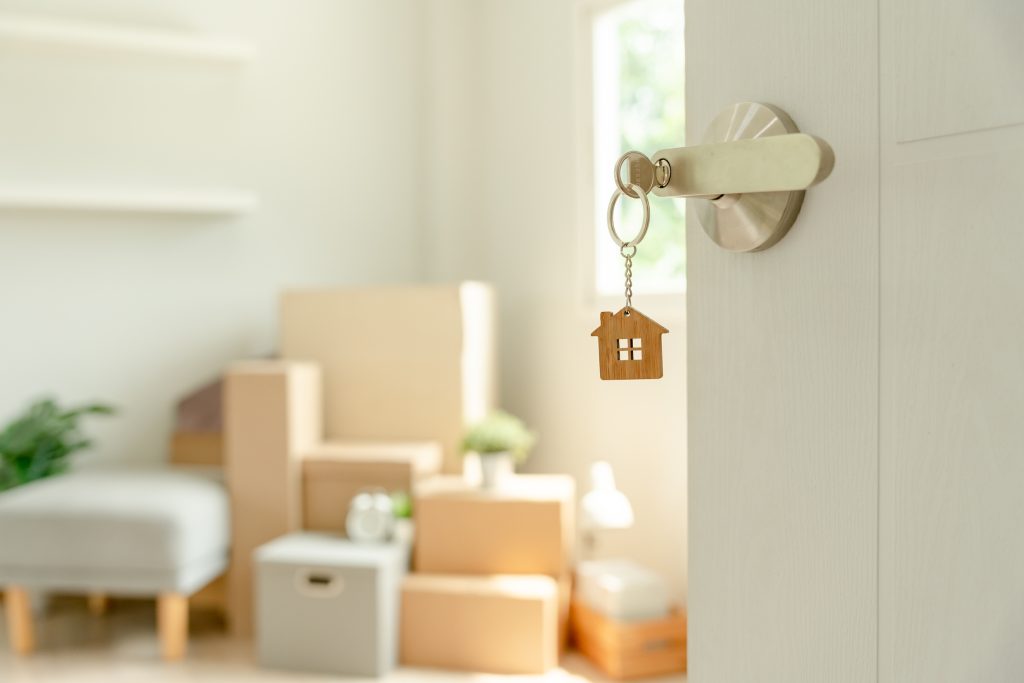Your home should be your sanctuary, but it can be uncomfortable – even dangerous – in periods of intense heat. As temperatures continue to rise due to climate change, it is imperative for homeowners to take proactive measures to protect their homes from the effects of heatwaves. In this comprehensive guide, we will provide you with practical tips and advice on how to prepare for, survive, and recover from a heatwave in the UK.
Even during a relatively cool summer, 1 in 5 homes are likely to overheat in the UK. Tossing and turning to get some sleep is the least of the potential issues caused as a result of this. Heatwaves can be dangerous, causing heat exhaustion and even heatstroke, especially for vulnerable groups such as the elderly and young children.
Beyond that, heatwaves can be a direct cause of damage to your home. This guide gives you all the information you need to prepare and protect your home when those temperatures start rising again this summer.
Understanding Heatwaves
A heatwave is a prolonged period of abnormally hot weather, which can last for several days or even weeks. Heatwaves are caused by a combination of factors, including high atmospheric pressure, low humidity, and warm air from the continent. During a heatwave, temperatures can rise to dangerous levels, putting vulnerable individuals such as the elderly, young children, and people with pre-existing medical conditions at risk.
Heatwaves can also have severe effects on homes, causing damage to the structure, paintwork, and appliances. The intense heat can cause warping of doors and windows, cracking of walls and ceilings, and fading of furniture and fabrics. Therefore, it is essential to take steps to protect your home from these potential damages.
Heatwaves are becoming more frequent and severe due to climate change. If greenhouse gas emissions continue at their current levels, by 2100, three out of four people on Earth will be subject to deadly heat and humidity levels for at least 20 days of the year.
Which types of properties are most susceptible?
According to Gov.uk, these properties are most at-risk for overheating and potential damage:
- Top floor flats
- Flats with minimal shading
- Flats with opening windows on only one side
- Large unshaded south, east, or west-facing windows
- Built-up urban areas with little green spaces nearby.
- Modern highly-insulated homes.
- Poorly insulated homes
- Homes with restrictions to how far and how often the windows can be left open
Preparing for a Heatwave
To prepare for a heatwave, there are several steps you can take to ensure that your home is ready for the extreme temperatures. These are separate to the repairs and maintenance you might want to consider carrying out or monitoring if you know a heat wave is due – we’ll cover those in the next section. Here is a checklist of actions you can take to minimise the heat in your home and keep comfortable!
1. Insulate your home
Ensure that your home is well-insulated to keep the heat out. This includes adding insulation to your attic, walls, and floors, as well as sealing any drafts around doors and windows.
You should also think about sealing air leaks around windows, doors, and ducts to prevent hot air from entering your home. Use weatherstripping, caulk, or foam insulation to do this.
2. Install shading & reflective devices
Install blinds, curtains or shades to block out the sun’s rays and reduce the amount of heat entering your home. Reflecting blinds can be great for this, reflecting the heat of the sun back outside rather than allowing it into your home. You could also use reflective materials on your roof, walls or windows to reflect sunlight and reduce heat absorption.
Avoid blackout blinds during heat waves as these can just absorb the heat even faster.
3. Keep your home well-ventilated
Ensure that your home is well-ventilated by opening windows and using fans to circulate air. If you have air conditioning, make sure it is working properly and serviced before the heatwave
4. Cross ventilate windows
If you don’t have air conditioning, create cross ventilation by opening windows and doors on opposite sides of rooms. If your home has more than one story, ensure rising hot air can flow through windows on upper floors or skylights.
You could also consider installing ceiling fans to circulate air and create a cooling breeze. – make sure the blades are rotating counterclockwise in the summer. However, portable fans are perhaps the most obvious solution for short but intense bursts of heat
5. Create a cool room
Designate a room in your home as a “cool room” where you can retreat during the hottest parts of the day. This room should be well-insulated, shaded, and equipped with fans. Use curtains, shades, or blinds to block out sunlight during the hottest parts of the day. It’s easier to focus your attention on keeping one room cool than focusing on your entire house!
6. Plan for power outages
Heatwaves can sometimes lead to power outages. Be prepared by having a backup plan, such as a generator or battery-operated fans and lights, and make sure you have a well-stocked emergency kit.
7. Take care of outdoor areas
Water your garden and plants in the early morning or late evening to reduce water evaporation. Add mulch to your garden beds to help retain moisture and protect plants from the heat.
You might also want to consider installing shade cloth or sails to protect outdoor living areas. Additionally, it’s worth thinking long-term about planting trees or bushes to shade your home from the sun. This can reduce temperatures by up to 5°C and improve air quality.
Repairs & Maintenance Jobs To Prevent Damage During A Heat Wave
The above tips are all great things you can do to keep cool during a heat wave, but what about your home? Below, we’ve put together a few must do home maintenance jobs to minimise damage to your home during extreme weather. These are either things you ideally will want to get on top of before a heat wave is due to strike, but at the very least will give you an idea of areas of your home to monitor to ensure further damage does not occur undetected.
Inspect Your Roof and Attic
Intense heat can cause your roof to expand and contract, leading to cracks and leaks. This can cause water damage to your home’s interior and can also lead to mould. Plus, your roof and attic can absorb a lot of heat during a heatwave, making your home even hotter. Inspect your roof and attic for any damage or leaks and make necessary repairs. (Check: are you covered if your ceiling caves in?)
You might also want to consider adding insulation to your attic to help keep your home cooler and installing an attic door cover (to reduce the flow of heat).
Seal Any Leaks
Leaky windows and doors can let hot air into your home, making it harder to keep cool when a heatwave strikes. Check for leaks around your windows and doors and seal them with weather stripping or caulking. Consider installing window film to help block out the sun’s heat.
In addition, the fluctuating temperatures during a heatwave can cause wooden doors and windows to expand and contract, resulting in warping or sticking. This can make it difficult to open or close them properly, and in some cases, the damage may require replacement or repair. Having your windows and doors looked at before a heat wave can prevent worse damage.
Check Your Fans
If you have ceiling or portable fans, ensure they’re in good working order. Clean any dust or debris from the blades and check they’re turning in the right direction (counterclockwise) to help circulate cool air throughout your home.
Maintain Your Garden
Outdoor equipment such as air conditioning units, generators, and lawnmowers can be damaged during a heatwave, so it’s essential to protect them from the heat with covers. What’s more, many homes have paved driveways or garden pathways made of materials like concrete or asphalt. During a heatwave, these surfaces can expand, causing them to crack or buckle – unfortunately there may not be a huge amount you can do to protect this, but it’s likely that already cracked surfaces will suffer worse.
Your garden can also play a role in keeping your home cool during a heatwave. Ensure your trees and shrubs are well-maintained and provide shade to your home. Heat-tolerant plants, such as succulents, require less water and can help cool the air around your home.
Test Your Smoke Alarms and Carbon Monoxide Detectors
During a heatwave, the risk of electrical fires can increase. Ensure your smoke alarms and carbon monoxide detectors are functioning properly by testing them and replacing batteries if needed. This will help to alert you in case of any fire or dangerous gas leaks.
As a side note, excessive heat can cause electrical systems to malfunction or even start a fire. It’s vital to ensure that your electrical systems are properly maintained and that you don’t overload your circuits during a heatwave.
Clean Your Gutters and Downspouts
Clear debris from your gutters and downspouts to ensure proper water flow. Blocked gutters can lead to water damage and leaks during sudden summer storms that may accompany a heatwave. Regular maintenance will help prevent water-related issues during extreme weather conditions.
Inspect and Repair External Shading Devices
Examine any awnings, pergolas, or shade sails for damage, and repair or replace them as needed. These shading devices help keep your home cool by providing shade to windows and outdoor living spaces, reducing the heat entering your home.
Maintain Outdoor Equipment
Inspect and maintain outdoor equipment such as pool pumps, irrigation systems, and generators. Ensure they are functioning properly, and make any necessary repairs to prevent breakdowns during a heatwave when they might be needed most.
Service Your Electrical System
Hire a professional electrician to inspect and service your home’s electrical system. This can help identify any potential issues, such as overloaded circuits or faulty wiring, that could pose a risk during a heatwave.
Plumbing Issues
Water pipes may be more susceptible to damage from heat waves due to our typically cooler climate in the UK. The extreme heat can cause the ground to shift and put stress on underground pipes, leading to leaks or bursts. Additionally, increased water usage during a heatwave can put extra strain on your plumbing system, causing further damage.
Heatwaves: In Figures
- In July 2022, the Met Office confirmed that 40°C had been recorded for the first time ever in the UK.
- The hottest day of 2022 saw 638 more deaths than normal in England
- Since 2017, the number of elderly people dying from a heatwave has increased 147%.
- According to ONS, rising temperatures may see heat-related deaths trebling by 2050, with the vulnerable groups we mentioned above most at risk.
- National Fire Chiefs reported 442 wildfires in 2022 – an approximate 79% increase.
After a Heatwave
After a heatwave, it’s essential to assess any damage caused by the extreme temperatures and take steps to plan for future heat waves. Here are some tips:
- Assess any damage: Check your home for any damage caused by the heatwave, such as cracks in walls or ceilings, damage to appliances, or issues with your home’s foundation.
- Repair and maintain: Address any damage by making necessary repairs and performing routine maintenance on your home, appliances, and outdoor equipment. This will help prevent further damage during subsequent heatwaves.
- Plan for future heatwaves: Make a plan for how you will prepare for future heatwaves, including stocking up on water and other supplies, ensuring that your air conditioning or fans are working correctly, and preparing an emergency kit in case of power outages.
- Evaluate your home’s energy efficiency: Review your home’s energy consumption during the heatwave and consider ways to improve its energy efficiency, such as upgrading insulation, sealing leaks, and investing in energy-efficient cooling systems.
- Use sustainable cooling methods: Consider using sustainable cooling methods, such as planting trees, installing green roofs or walls, and using shade sails or pergolas to reduce the amount of heat absorbed by your home and lower the indoor temperature.
- Stay informed: Keep track of weather forecasts and heatwave warnings so you can take necessary precautions and prepare for any upcoming heatwaves.
- Share your experiences: Talk to your friends, family, and neighbours about your experiences during the heatwave and share any lessons learned or effective strategies for staying cool and safe. This can help build a community of support and resilience for future heatwaves.
Case Studies of Fires from Heatwaves in the UK
During heatwaves, the risk of fires increases significantly. The UK has recently seen several devastating fires caused by high temperatures. Here are a few case studies of fires from heatwaves in the UK:
Manchester Mill Fire (2019)
In August 2019, a fire broke out at a mill in Manchester during a heatwave. Starting in the basement of the building, it quickly spread to the upper floors. The high temperatures and dry conditions made the blaze difficult for firefighters to control, and it took over 24 hours to extinguish fully.
The mill was destroyed, and nearby residents were evacuated due to concerns about the building’s stability. Thankfully, no one was injured in the fire.
London Fire Brigade’s Busiest Day (2022)
In July 2022, London Fire Brigade had its busiest day since World War II due to multiple fires breaking out across the city during a heatwave. Firefighters worked around the clock to contain the fires caused by the high temperatures and dry conditions.
The brigade responded to over 1,000 incidents in just 24 hours. The fires caused significant damage to buildings and vehicles, but again, thankfully, no one was seriously injured.
Last year’s heatwave was unprecedented, with over half the UK’s weather stations recording their hottest day ever. 2023 is set to be even hotter.
Saddleworth Moor Fire, UK (April 2021)
A wildfire spread across Saddleworth Moor in Greater Manchester, England, during a period of unusually high temperatures and dry conditions. The fire required a significant effort from local fire services to contain the blaze, and a number of nearby homes were evacuated as a precaution.
These stories highlight the devastating impact that heatwaves and wildfires can have on homes and communities, emphasizing the importance of preparedness and mitigation measures to protect against the damaging effects of extreme heat.
Does Home Insurance Cover Heatwave Damage?
The damage that can occur to your home during a heatwave will, in most cases, be covered by your home insurance provider. That’s with the caveat, however, that you have taken sensible, reasonable steps to protect your home from potential hazards – such as fires and wear and tear.
It’s vital to discuss your individual circumstances with your home insurance provider to ensure that your policy covers you sufficiently, and to the correct value.









